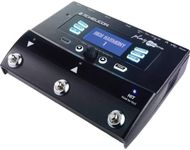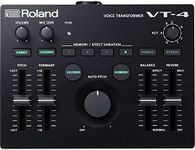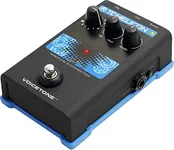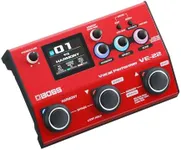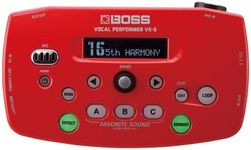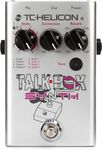Buying Guide for the Best Vocal Processors
Choosing the right vocal processor can significantly enhance your vocal performance, whether you're a live performer, a studio artist, or a podcaster. Vocal processors can add effects, correct pitch, and even harmonize your voice, making your sound more professional and polished. To find the best fit for you, it's important to understand the key specifications and how they align with your needs and preferences.EffectsEffects are the various sound modifications that a vocal processor can apply to your voice, such as reverb, delay, chorus, and distortion. These effects can add depth, texture, and character to your vocals. If you perform live, you might want a processor with a wide range of effects to adapt to different songs and styles. For studio recording, high-quality, customizable effects are crucial to achieving the desired sound. Beginners might start with basic effects, while advanced users may look for more complex and varied options.
Pitch CorrectionPitch correction is a feature that adjusts your voice to the correct pitch, ensuring that you stay in tune. This is particularly useful for live performances where maintaining perfect pitch can be challenging. There are different levels of pitch correction, from subtle adjustments to more noticeable auto-tune effects. If you want a natural sound, look for a processor with subtle pitch correction. For a more modern, stylized sound, a processor with strong auto-tune capabilities might be preferable.
HarmonyHarmony features allow the vocal processor to create additional vocal lines that harmonize with your main vocal. This can make your performance sound richer and more full-bodied. Some processors offer simple harmonies, while others provide complex, multi-part harmonies. If you perform solo but want the sound of a full vocal group, a processor with advanced harmony features is ideal. For those who prefer a more straightforward sound, basic harmony options will suffice.
ConnectivityConnectivity refers to the various input and output options available on the vocal processor, such as XLR, USB, and MIDI. These connections determine how you can integrate the processor with other equipment like microphones, computers, and mixing boards. If you perform live, ensure the processor has the necessary outputs to connect to PA systems. For studio use, USB connectivity can be useful for direct recording to a computer. Consider your existing setup and choose a processor that fits seamlessly into your workflow.
User InterfaceThe user interface is how you interact with the vocal processor, including the display, buttons, and knobs. A user-friendly interface can make it easier to adjust settings quickly, especially during live performances. Look for a processor with a clear, intuitive interface if you need to make on-the-fly adjustments. For studio use, a more complex interface with detailed controls might be acceptable, as you have more time to fine-tune your settings.
PortabilityPortability is the ease with which you can transport the vocal processor. This is important for live performers who need to move their equipment frequently. Smaller, lightweight processors are easier to carry and set up, but they might have fewer features. Larger processors may offer more capabilities but can be cumbersome to transport. Consider how often you'll need to move the processor and choose one that balances portability with the features you need.


